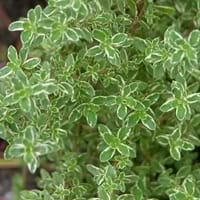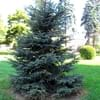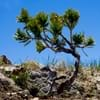Life Span
Annual
Perennial
Type
Needled or Scaled Evergreen
Herbs
Origin
Western United States, Canada
Asia, Europe
Types
Eastern white spruce
Black Hills white spruce
Alberta white spruce
Alaska white spruce
Elfin Thyme, Pink Chintz Thyme, Lime Thyme, White Moss Thyme, Lavender Thyme, Silver Needle Thyme
Habitat
gardens, Grassland, Hillside, Woods
Rocky areas
USDA Hardiness Zone
2-7
6-9
Sunset Zone
A1, A2, A3, 1a, 1b, 2a, 2b, 3a, 3b, 4, 5, 6, 7, 14, 15, 16, 17
1a, 1b, 2a, 2b, 3a, 3b, 4, 5, 6, 7, 8, 9, 10, 11, 12, 13, 14, 15, 16, 17, 18, 19, 20, 21, 22, 23, 24
Habit
Pyramidal
Cushion/Mound-forming
Minimum Width
Not Available
Flower Color
Peach, Pink
Crimson, Lavender, Pink, White
Flower Color Modifier
Bicolor
Unknown
Fruit Color
Tan
Not Available
Leaf Color in Spring
Light Green, Gray Green
Green
Leaf Color in Summer
Green, Gray Green
Gray Green
Leaf Color in Fall
Green, Gray Green
Gray Green
Leaf Color in Winter
Green, Gray Green
Gray Green
Leaf Shape
Cylindrical
Tiny
Plant Season
Spring, Summer, Fall, Winter
Summer
Sunlight
Full Sun, Partial Sun
Full Sun, Part sun
Type of Soil
Loam
Loamy, Sandy
The pH of Soil
Acidic, Neutral
Neutral, Slightly Alkaline
Soil Drainage
Average
Well drained
Bloom Time
Early Spring, Late Spring
Fall, Spring, Summer, Winter
Tolerances
Drought
Drought
Where to Plant?
Container, Ground, Pot
Container, Ground
How to Plant?
Seedlings
Seedlings, Stem Planting
Plant Maintenance
Medium
Medium
Watering Requirements
Average Water Needs, It cannot sustain wet-feet, Keep the ground moist but not water-logged, Requires watering in the growing season
Do not water frequently, Does not require lot of watering, Requires watering in the growing season, Water occasionally
In Summer
Lots of watering
Lots of watering
In Spring
Moderate
Moderate
In Winter
Average Water
Average Water
Soil pH
Acidic, Neutral
Neutral, Slightly Alkaline
Soil Type
Loam
Loamy, Sandy
Soil Drainage Capacity
Average
Well drained
Sun Exposure
Full Sun, Partial Sun
Full Sun, Part sun
Pruning
Prune to stimulate growth, Prune twice a year, Remove hanging branches, Remove old, faded fronds
Prune for shortening long shoots, Prune if you want to improve plant shape, Prune lower leaves, Requires extensive pruning
Fertilizers
All-Purpose Liquid Fertilizer
All-Purpose Liquid Fertilizer
Pests and Diseases
Red blotch
Alternaria leaf blight, Aphids, Botrytis collar rot, Rhizoctonia Root Rot, Spider mites
Plant Tolerance
Drought
Drought
Flowers
Insignificant
Yes
Flower Petal Number
Single
Not Available
Fragrant Bark/Stem
No
Yes
Foliage Texture
Fine
Fine
Foliage Sheen
Glossy
Matte
Attracts
Birds
Butterflies
Allergy
Skin irritation
Diarrhea, Skin irritation
Aesthetic Uses
Showy Purposes
Beautification, Showy Purposes, Used for decorating walls, fences, gates, hedges, etc.
Beauty Benefits
Not Available
Not Available
Environmental Uses
Air purification
Air purification
Medicinal Uses
Not Available
Arthritis, Bronchitis, Chronic fatigue, Cough, Gastritis, Hair Loss, Insomnia, Kidney problems, Muscle Pain, Skin irritation, Snoring, Sore throat, Stomach pain, Swelling
Part of Plant Used
Whole plant
Whole plant
Other Uses
Used in Furniture
Air freshner, Cosmetics, Economic Purpose, Employed in herbal medicine, Oil is used in perfume, soaps, creams, etc., Showy Purposes, Used As Food, Used as Ornamental plant, Used for fragrance
Used As Indoor Plant
No
Yes
Used As Outdoor Plant
Yes
Yes
Garden Design
Feature Plant, Screening, Wind Break
Container, Edible, Herb, Rock Garden
Botanical Name
PICEA glauca var. albertiana
Thymus vulgaris
Common Name
White Spruce
Thyme
In Hindi
अलबर्टा सजाना
अजवायन के फूल
In German
Alberta Fichte
Thymian
In French
épinette de l'Alberta
Thym
In Spanish
Alberta abeto
Tomillo
In Greek
Αλμπέρτα ερυθρελάτης
θυμάρι
In Portuguese
Alberta abeto
Tomilho
In Polish
Alberta świerk
Tymianek
In Latin
Alberta abiegnis
Thymum
Phylum
Not Available
Magnoliophyta
Class
Not Available
Magnoliopsida
Order
Not Available
Not Available
Clade
Not Available
Not Available
Tribe
Not Available
Not Available
Subfamily
Piceoideae Frankis
Not Available
Number of Species
Not Available
Season and Care of Alberta Spruce and Thyme
Season and care of Alberta Spruce and Thyme is important to know. While considering everything about Alberta Spruce and Thyme Care, growing season is an essential factor. Alberta Spruce season is Spring, Summer, Fall and Winter and Thyme season is Spring, Summer, Fall and Winter. The type of soil for Alberta Spruce is Loam and for Thyme is Loamy, Sandy while the PH of soil for Alberta Spruce is Acidic, Neutral and for Thyme is Neutral, Slightly Alkaline.
Alberta Spruce and Thyme Physical Information
Alberta Spruce and Thyme physical information is very important for comparison. Alberta Spruce height is 1,220.00 cm and width 300.00 cm whereas Thyme height is 10.20 cm and width Not Available. The color specification of Alberta Spruce and Thyme are as follows:
Alberta Spruce flower color: Peach and Pink
Alberta Spruce leaf color: Light Green and Gray Green
Thyme flower color: Crimson, Lavender, Pink and White
- Thyme leaf color: Green
Care of Alberta Spruce and Thyme
Care of Alberta Spruce and Thyme include pruning, fertilizers, watering etc. Alberta Spruce pruning is done Prune to stimulate growth, Prune twice a year, Remove hanging branches and Remove old, faded fronds and Thyme pruning is done Prune for shortening long shoots, Prune if you want to improve plant shape, Prune lower leaves and Requires extensive pruning. In summer Alberta Spruce needs Lots of watering and in winter, it needs Average Water. Whereas, in summer Thyme needs Lots of watering and in winter, it needs Average Water.





